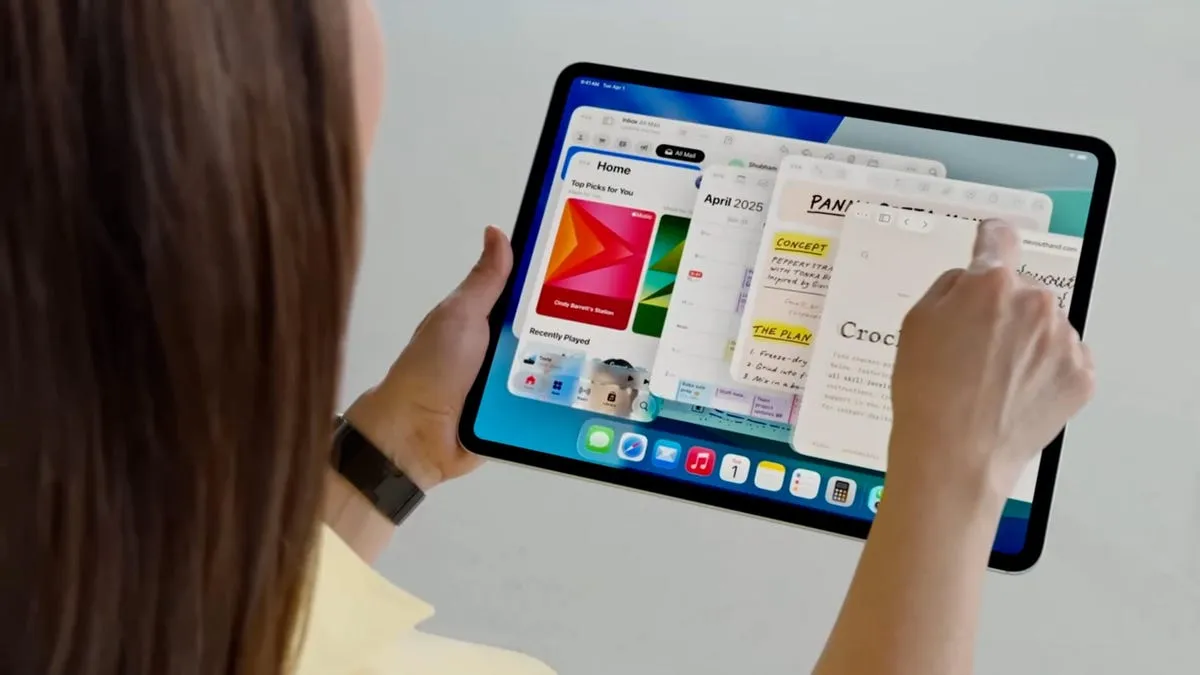
When it comes to defining a computer, my perspective is simple: it’s whatever helps me get my work done effectively. While I enjoy exploring new ideas about what computers can evolve into, I find that traditional work tools like a PC or a Mac remain indispensable for my job. When traveling, I often rely on an iPad for its convenience, but I still prefer to carry both devices to ensure I have the full range of functionality I need.
This dual-device strategy aligns with Apple’s long-standing message about the capabilities of their iPads and Macs. Since 2018, Apple has been clear that these platforms would not merge, a point emphasized during a notable stage announcement. Back then, I felt that MacOS and iOS needed to integrate for a more seamless experience. I’m willing to play the long game, as Apple often does with its technology, and I’m prepared to wait for this pivotal moment of convergence to arrive. However, I believe this moment should be happening sooner rather than later.
The latest iPad Pro felt like the Mac I wanted in a different format, albeit lacking the software I was searching for. Thankfully, that software is on the horizon with the upcoming iPadOS 26, which I see as a significant indicator that the merge between iPads and Macs is in progress. The developer beta already showcases a more Mac-like experience, and I recommend waiting for the public beta this summer before diving in.
During this year’s WWDC, Apple referred to iPadOS 26 as being Mac-like multiple times. This is a notable shift in their messaging. New features include support for multiple windows, a refined mouse pointer that resembles an arrow instead of a large circle, menu bars, and a Preview app that mimics the Mac's file organization. The ability to organize folders similarly to a Mac is already making me nod in appreciation. With a keyboard and trackpad attached, the iPad begins to feel more versatile, capable of multitasking, and potentially able to handle serious work efficiently.
Despite these advancements, I still find myself questioning whether the iPad can ever truly replace a Mac. The closer we get to the expectation of full integration, the more I worry about the potential for disappointment. I wonder if I will use the new iPadOS 26, get into a productive flow, and suddenly be disrupted by the realization that certain parts of the OS are still not quite aligned with the Mac experience. This uncertainty leaves me cautious, as I suspect that while we are nearing a Mac-like iPadOS, it may still fall short in crucial areas.
Interestingly, many iPads and Macs share the same M-series hardware and offer similar keyboard and trackpad experiences. There seems to be no technical reason why an iPad couldn't also function as a Mac, aside from Apple’s decision to maintain distinct software functionalities. Conversely, turning a Mac into an iPad would necessitate a touchscreen and Pencil support, complicating matters further.
Making all Mac and iPad apps truly cross-compatible across an integrated OS presents challenges, but it’s achievable. Apple has successfully transitioned Mac apps from Intel to ARM-based hardware in the past, and the current hardware is already aligned. The goals of the applications may differ, but their missions are converging. We are seeing Macs, iPads, and iPhones adopting similar visual designs, such as Liquid Glass, along with increasingly alike notifications and widgets.
While I don’t want every Apple device to function the same, I believe the overlaps between iPads and MacBooks are becoming increasingly pronounced. I support the notion that iPads should retain their simplicity, allowing users to trigger multi-window work modes easily. However, I aspire for that multi-windowed mode to evolve into a fully functional Mac experience—one that allows me to leave my laptop behind.
This convergence of devices may prove essential for more than just convenience and budget considerations. As Apple looks toward developing future Vision headsets or lightweight connected glasses, it should streamline its product line. I envision carrying a hybrid iPad and MacBook in my bag alongside lightweight Vision glasses, but I cannot see myself managing a Vision, an iPad, and a Mac simultaneously. It’s clear that a shift must occur for Apple to succeed in this evolving landscape.